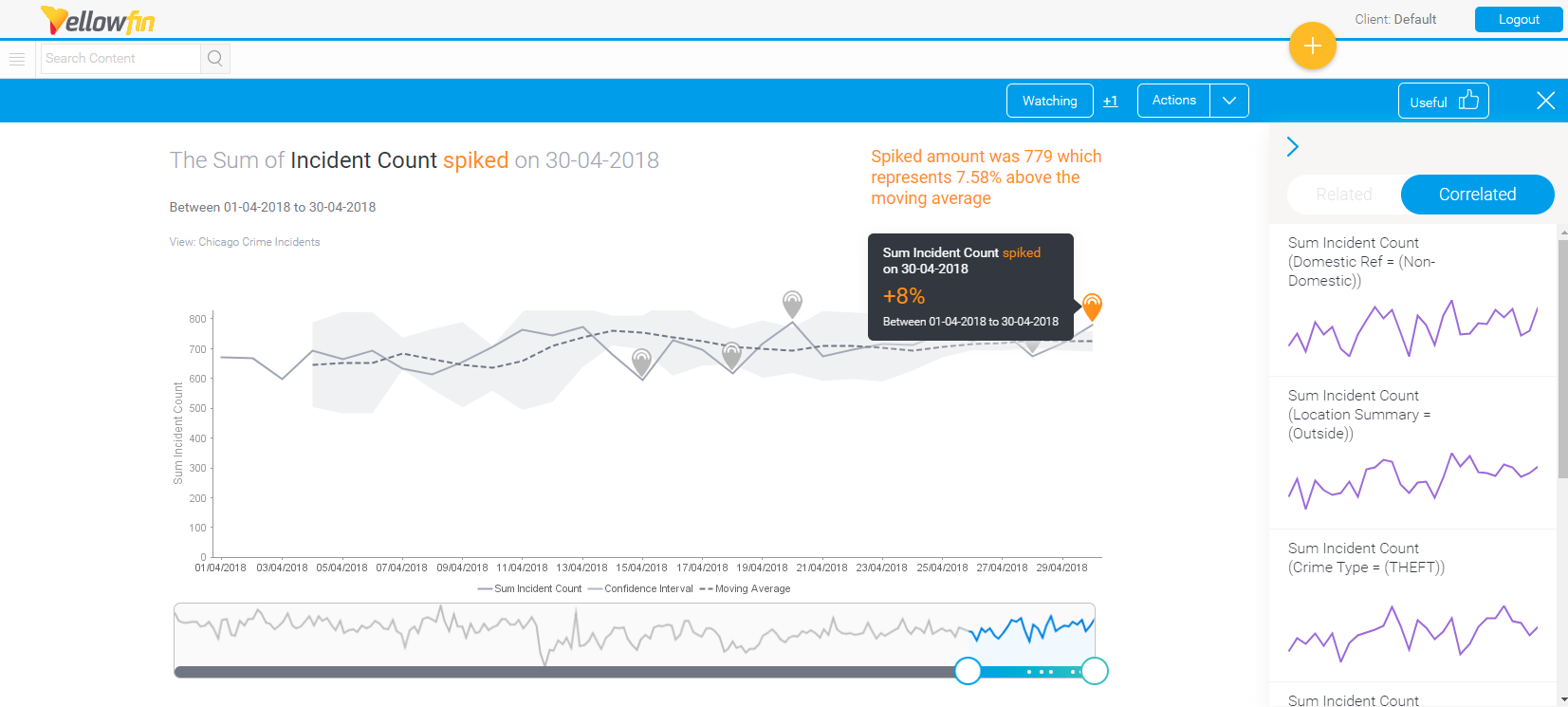
Yellowfin Signals automatically discovers and surfaces the most important changes in your data as they happen. Alerts are immediately delivered as these changes occur. Yellowfin Signals performs time series analysis - taking slices of time series data based on the dimensionality available. It will automatically deliver statistically significant changes, but based on the machine algorithms that are constantly scheduled.
Yellowfin Signals will inherently know the data and content you have access to and will only serve up Signals based on your data permissions. It will also become more personalized the more the user interacts with it. The Signals that a user watches, rates or ignores - Yellowfin stores this and refines its recommendation engine so it knows what matters to the individual, and can serve more relevant Signals in the future.

Yellowfin Signals automatically looks for the following patterns.
Signal type | Related analysis group | Description |
Spikes & drops | Detected using the Outliers analysis | Sudden increases or decreases in the metric. For example, a lot of extra visits occurred on the product page of your website yesterday. |
Breakouts | Outliers | Successive increases (called Prolonged Spikes) or successive decreases (Prolonged Drops) in metric.For example, chocolate sales going up the entire week before Valentine’s day is a prolonged spike. |
Change in trend | Trend change | A trend line changes from up to down, or vice versa. For example, PC sales were growing but then started to decline last month. |
Change in volatility | Trend change | Volatility describes how much the value changes from one period to another. For example, the share price becomes very volatile after news that the trade deal was cancelled. |
Change in Total (one period to another) | Period comparison | Compares the total this week, month, quarter with another similar period - last week, month, this quarter last year. |
New lost attributes | Period comparison | Significant attributes that entered or left the data this period. For example, a customer that bought every month stopped buying this month. |